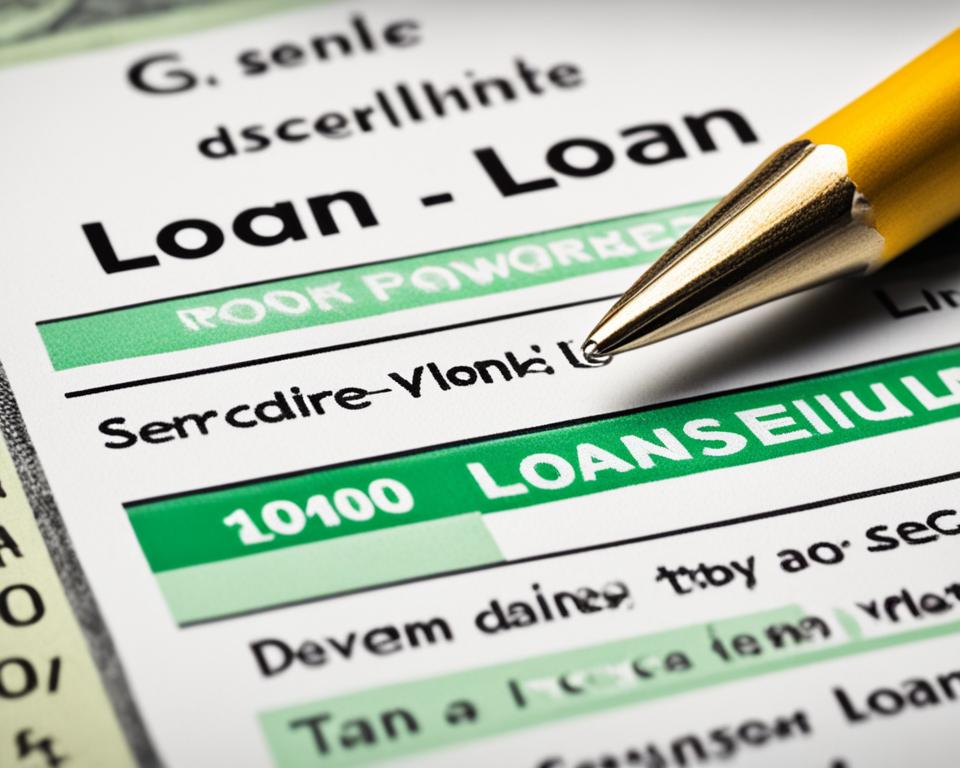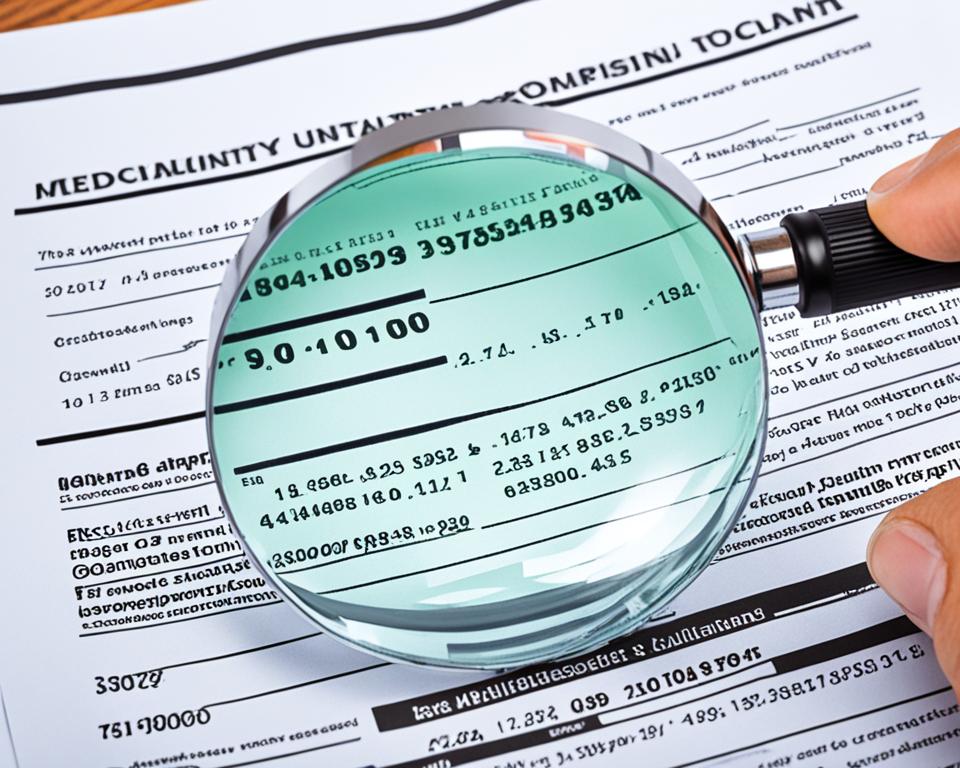Getting a mortgage is an important step towards homeownership, but if you’re a beginner, the process can seem overwhelming. Don’t worry, I’m here to help break it down for you. In this article, I’ll explain the basics of mortgages, including the steps involved in securing one.
A mortgage is a loan used to finance the purchase of a home. It allows you to spread out the cost of buying a property over several years. The mortgage process can be divided into six key steps: pre-approval, house shopping, mortgage application, loan processing, underwriting, and closing.
During the pre-approval stage, you’ll determine what type of mortgage is best for you and how much you can afford. This step involves getting in touch with a lender who will review your financial information and provide you with a pre-approval letter stating the maximum loan amount you qualify for.
Once you have your pre-approval, you’ll move on to the house shopping phase. This is where you’ll search for the perfect property that fits your budget and requirements. Online real estate portals like Zillow and Trulia can be helpful tools during this stage.
After finding a suitable property, it’s time to apply for a mortgage. You’ll complete a mortgage application and provide the necessary documentation to the lender. It’s important to shop around for the best deal and compare offers from multiple lenders.
Once your application is submitted, the lender will begin the loan processing stage. They will review and verify the information you provided, conduct property inspections and appraisals, and order a credit report. You’ll receive a loan estimate, which outlines the terms and costs of the mortgage.
Next comes the underwriting process, where the lender thoroughly assesses your application. Mortgage underwriters will evaluate factors such as your credit history, property value, and overall financial situation. If everything meets their criteria, they’ll give final approval and lock in your interest rate.
Lastly, the closing stage involves signing the necessary documents and completing the purchase of the property. You’ll meet with a title company or attorney’s office to finalize the transaction. It’s important to budget for closing costs, which include fees charged by the lender, appraisal, title, and insurance fees.
Now that you have a better understanding of the mortgage process, you’ll be well-equipped to navigate through it. Remember to research mortgage types, calculate monthly costs, and gather all the necessary documentation. By following these steps and being prepared, you’ll be on your way to becoming a homeowner.
Key Takeaways:
- Getting a mortgage involves a six-step process, including pre-approval, house shopping, mortgage application, loan processing, underwriting, and closing.
- During the pre-approval stage, determine the mortgage type that suits you and obtain a pre-approval letter from a lender.
- When house shopping, use online real estate portals to find suitable properties and work with a real estate agent if needed.
- Complete a mortgage application and gather necessary documents to apply for a mortgage.
- Proceed to loan processing, where the lender reviews and verifies your application and requests additional documentation.
Step 1: Get Your Pre-Approval
To start the mortgage process, it’s important to get pre-approved. This involves determining the type of mortgage that suits you and obtaining a pre-approval letter from a lender. A pre-approval letter states the maximum amount the lender is willing to loan you, giving you a clear idea of your budget for purchasing a home.
Why is pre-approval important?
Pre-approval is crucial because it helps you understand your purchasing power and gives you an advantage when negotiating with sellers. By knowing the maximum loan amount you can qualify for, you can focus on finding homes within your budget and avoid wasting time on properties that are out of reach.
Consider mortgage types and terms
During the pre-approval process, it’s essential to consider different mortgage types and terms. Explore options such as fixed-rate mortgages, adjustable-rate mortgages (ARMs), and government-backed loans like FHA or VA loans. Understanding the pros and cons of each type of mortgage will help you make an informed decision that best suits your financial goals and preferences.
Utilize a mortgage calculator for estimates
When determining your pre-approval amount, it’s beneficial to use a mortgage calculator. This tool allows you to input various interest rates, loan terms, and down payment amounts to estimate your monthly mortgage payments. By experimenting with different scenarios, you can gain a clearer understanding of the financial commitment involved in homeownership.
Factors to consider
When obtaining your pre-approval, it’s crucial to consider other factors, such as interest rates, monthly costs, and private mortgage insurance (PMI). If you cannot make a 20% down payment, PMI may be required to protect the lender. Understanding these additional costs will help you plan your budget accordingly.
Having a pre-approval in hand puts you in a stronger position when making an offer on a home. It shows sellers that you are a serious and qualified buyer. So, before you start house hunting, be sure to secure your pre-approval to streamline the process and increase your chances of finding the perfect home.
Step 2: Find a Property
Now that you have obtained your pre-approval, it’s time to start the exciting process of finding a property. This step is often referred to as house shopping, where you search for the perfect home that meets your needs and preferences. To make the process easier and more convenient, you can utilize real estate portals that offer comprehensive property listings.
Real estate portals such as Zillow and Trulia provide a wide range of properties for sale, allowing you to browse through various options and filter the search results based on your preferences. You can input specific criteria such as location, price range, number of bedrooms, and other amenities to narrow down your property search.
Once you have identified potential properties, you can start making offers on the ones that best match your requirements. It’s essential to work with a real estate agent who can guide you through the process and help you make informed decisions. An experienced agent will have a deep understanding of the local market and can assist you in making the right offer for each property.
Making an Offer
When making an offer, it’s crucial to consider factors such as the property’s condition, market value, and your budget. Your real estate agent can provide valuable insights and assist you in determining a competitive offer price.
“Finding the right property is an important step in the mortgage process. Real estate portals like Zillow and Trulia make house shopping more accessible, allowing you to browse through a wide selection of properties and make offers on those that meet your criteria.” – Mortgage Expert
While browsing for properties, it’s essential to keep in mind that you may need to budget for earnest money, which is typically 1% to 2% of the sale price. Earnest money acts as a good faith deposit and demonstrates your commitment to the transaction. If your offer is accepted, the earnest money will be put towards your down payment.
House Shopping Checklist:
- Utilize real estate portals like Zillow or Trulia.
- Filter the search results based on your preferences.
- Make offers on properties that meet your criteria.
- Consult with a real estate agent for guidance and expertise.
- Budget for earnest money, typically 1% to 2% of the sale price.
By utilizing real estate portals and working with a knowledgeable real estate agent, you can streamline your property search and increase your chances of finding the perfect home.
Step 3: Apply for a Mortgage
Now that you have found your dream property, it’s time to take the next step and apply for a mortgage. Applying for a mortgage involves working with a mortgage lender to gather the necessary documents and provide the required information. This is an important stage in the mortgage process, so it’s crucial to be prepared.
Firstly, you should approach the lender who provided your pre-approval, as they are already familiar with your financial situation. However, it’s also worth shopping around to find the best deal and compare offers from different lenders. This will help you secure a mortgage with favorable terms.
The mortgage lender will require specific information and documentation to assess your eligibility for a loan. You will need to provide details about your employment, income, assets, and debts. Additionally, you will need to furnish information about the property you are purchasing, such as its address and purchase price.
One crucial aspect that lenders consider during the application process is your credit history. It’s a good idea to review your credit report beforehand to ensure its accuracy and address any potential issues or discrepancies. Being proactive in managing your credit can positively impact your mortgage application.
TIP: Review your credit report and address any issues before applying for a mortgage.
During the application process, you should be prepared to explain any factors in your financial background that may require further clarification. This may include previous bankruptcies, foreclosures, or outstanding collections. Honesty and transparency are key when working with your mortgage lender.
By being proactive and providing the necessary information and documentation, you are contributing to a smooth mortgage application process. This will help your mortgage lender assess your eligibility and provide you with an accurate loan estimate.
Gather the following documents for your mortgage application:
- Proof of income: recent pay stubs, W-2 forms, or tax returns
- Bank statements: to show your cash reserves and ability to make mortgage payments
- Identification documents: such as a driver’s license or passport
- Property information: including sales contract, property appraisal, and title documentation
- Financial statements: statements related to any outstanding loans or debts
Gathering these documents in advance will streamline the application process and help you submit a complete and accurate application to your mortgage lender.
Key Steps in the Mortgage Application Process
| Step | Description |
|---|---|
| 1 | Complete the mortgage application form provided by the lender |
| 2 | Provide the necessary documentation, such as proof of income and identification |
| 3 | Allow the lender to conduct a credit check and review your credit history |
| 4 | Explain any factors in your financial background that may require further clarification |
| 5 | Submit the completed application and documents to the lender for review |
| 6 | Wait for the lender’s response and loan estimate |
Step 4: Complete Loan Processing
Once you’ve submitted your mortgage application, the next step is loan processing. During this stage, the lender carefully reviews and verifies the information provided in your application. This process involves ordering a credit report, verifying your employment and bank deposits, as well as conducting property inspections, appraisals, and title searches. These steps are taken to ensure that all the necessary checks are performed to assess the viability of the loan.
Within three business days of submitting your application, you will receive a loan estimate from the lender. This document outlines the terms and estimated costs of the mortgage. It provides an overview of the interest rate, monthly payments, closing costs, and any anticipated fees. The loan estimate helps you understand the financial implications of the mortgage and allows for comparison with other loan offers you may be considering.
If you decide to proceed with the loan offer presented in the loan estimate, the loan will move into the processing stage. At this point, the lender may request additional documentation to further support your application. It’s important to promptly provide any requested information to ensure a smooth loan processing experience.
Loan processing is a crucial step in the mortgage process as it involves the careful evaluation and verification of your financial information. By providing all the required documentation and promptly responding to any requests from the lender, you can help expedite the processing of your loan and move closer to achieving your dream of homeownership.

Step 5: Go Through Underwriting Process
The underwriting process plays a crucial role in the mortgage approval journey. It involves a thorough assessment of your mortgage application by mortgage underwriters, who meticulously review various aspects such as property appraisals, property value, and credit history.
Mortgage underwriters carefully evaluate your application to determine whether to accept, reject, or approve the loan with certain conditions. Their expertise ensures that the lender assesses the risk associated with the mortgage accurately.
If your mortgage application is approved during the underwriting process, you will have the opportunity to lock in your interest rate. This allows you to secure a favorable interest rate, protecting you from potential rate increases during the remainder of the mortgage approval process.
While going through the underwriting process, it’s important to consider the closing costs associated with your mortgage. These costs typically range from 2% to 5% of the purchase price and need to be factored into your financial planning.
| Benefits of Underwriting Process |
|---|
| Accurate risk assessment: Mortgage underwriters thoroughly evaluate your application to ensure that the lender understands the risks associated with lending you money. |
| Protection against rate increases: Locking in your interest rate during the underwriting process shields you from potential rate hikes during the mortgage approval journey. |
| Transparent evaluation: Underwriters assess various aspects of your application, including property appraisals and credit history, ensuring a fair and standardized evaluation process. |
| Final approval: If your mortgage application is approved during underwriting, you’ll be one step closer to owning your dream home. |
Step 6: Close on the Property
Once the mortgage is approved, it’s time to close on the property. This is the final step in the mortgage process and involves signing a large stack of documents. At the closing, you will meet with the title company or attorney’s office to go through all the necessary paperwork.
One important document you will sign is the promissory note. This document outlines the terms of the loan, such as the interest rate, repayment schedule, and any prepayment penalties.
Prior to closing, it’s important to consider the closing costs. These are the fees associated with the mortgage transaction and usually range from 2% to 5% of the purchase price of the property. Closing costs include fees charged by the lender, appraisal fees, title fees, and insurance fees.
After closing, you officially become the owner of the property. This means you take possession of the keys and are responsible for making monthly mortgage payments.
Closing on a property is a significant milestone in the mortgage process. It’s important to review all the documents carefully and ask any questions you may have. The closing process can vary depending on the state, so it’s a good idea to familiarize yourself with the specific requirements in your area.
Understanding Mortgages: How Mortgages Work and Monthly Payments
A mortgage is a loan used to finance a home purchase. When you make monthly mortgage payments, they typically cover four main components:
- Principal: This is the amount that goes toward paying down the loan balance.
- Interest: The interest is the cost of borrowing the money from the lender.
- Taxes: Property taxes are an essential component of your monthly mortgage payment.
- Insurance: Homeowner’s insurance protects your property and is included in the monthly payment.
In the early years of your mortgage, a larger portion of the payment goes towards interest. As you make payments over time, more of the payment goes towards principal. This allows you to build equity in your home.
“A mortgage is not just a loan; it’s a tool to build wealth over time.”
To better understand the breakdown of each payment, your lender will provide you with an amortization schedule. This schedule details how much of your payment goes towards each component throughout the life of the mortgage. It’s important to review this schedule to track your progress in paying down the loan balance and to plan for future financial goals.
| Year | Principal | Interest | Taxes | Insurance | Total Payment |
|---|---|---|---|---|---|
| 1 | $500 | $400 | $200 | $100 | $1,200 |
| 2 | $550 | $375 | $210 | $100 | $1,235 |
| 3 | $600 | $350 | $220 | $100 | $1,270 |
This table demonstrates how the monthly mortgage payment is divided among different components over the course of three years. As you can see, the principal payment increases while the interest payment decreases over time.
Understanding how mortgages work and the breakdown of monthly payments is essential for managing your finances responsibly and making informed decisions about homeownership.
Qualifying for a Mortgage: Credit Score, Debt-to-Income Ratio, and Down Payment
To qualify for a mortgage, several factors are taken into consideration by lenders. These include your credit score, debt-to-income ratio (DTI), and down payment. Let’s delve into each of these elements:
-
Credit Score
Your credit score plays a crucial role in mortgage qualification. A higher credit score generally leads to a lower interest rate, making homeownership more affordable in the long run. For conventional mortgages, lenders typically look for a FICO Score of at least 620. For FHA loans, a FICO Score of 580 or above is usually required.
-
Debt-to-Income Ratio
Your debt-to-income ratio (DTI) is another important factor in determining mortgage eligibility. The DTI ratio compares your monthly debt payments to your gross monthly income. Lenders generally prefer a DTI ratio below 43%. To calculate your DTI, divide your total monthly debt payments by your gross monthly income and multiply by 100.
-
Down Payment
The down payment is the initial amount you pay at the time of purchasing a property. The size of your down payment can affect your mortgage qualification. Down payments vary depending on the loan type and lender requirements. While a 20% down payment is often recommended as it avoids the need for mortgage insurance, there may be options available for lower down payment percentages.
By understanding and addressing these factors, you can improve your chances of qualifying for a mortgage and securing favorable terms. A higher credit score, a healthy debt-to-income ratio, and a sufficient down payment are key elements to consider when planning to buy a home.
Conclusion
Understanding the mortgage process is essential for beginners looking to purchase a home. By following the key stages of pre-approval, house shopping, mortgage application, loan processing, underwriting, and closing, you can navigate the mortgage process with confidence.
Before starting your journey, take the time to research different mortgage types and calculate your monthly costs. This will help you determine what type of mortgage is best suited for your financial situation. Additionally, gathering all necessary documentation ahead of time will streamline the application process, saving you time and potential frustration.
When it comes to qualifying for a mortgage, be mindful of your credit score, debt-to-income ratio, and down payment. A higher credit score typically leads to a lower interest rate, and maintaining a healthy debt-to-income ratio shows lenders that you can manage your monthly payments. While a 20% down payment is ideal, there are mortgage options available that require a lower down payment, although this may result in the need for mortgage insurance.
By familiarizing yourself with the mortgage basics for beginners, understanding the mortgage process, and implementing these mortgage tips, you’ll be well-prepared to embark on your homebuying journey. Remember, buying a home is a significant financial decision, so take the time to educate yourself and seek guidance from professionals to ensure a smooth and successful experience.
FAQ
What is a mortgage and how does the process work?
A mortgage is a loan used to finance a home purchase. The process involves several steps, including pre-approval, house shopping, mortgage application, loan processing, underwriting, and closing.
How do I get pre-approved for a mortgage?
To get pre-approved, you need to determine the type of mortgage that suits you and obtain a pre-approval letter from a lender. This letter states the maximum amount the lender is willing to loan you.
How do I find a property?
You can use online real estate portals like Zillow or Trulia to search for homes. Start making offers on properties that meet your criteria and consider working with a real estate agent to assist you in making the right offer.
How do I apply for a mortgage?
Approach the lender who provided your pre-approval, but also shop around for the best deal. The lender will require information and documentation such as employment details, income, assets, debts, and property information.
What happens during the loan processing stage?
The lender will review the information you provided, order a credit report, verify employment and bank deposits, conduct property inspections, appraisals, and title searches. After reviewing the information, you will receive a loan estimate.
What is the underwriting process?
Underwriting is the stage where the lender assesses your mortgage application and gives final approval. Mortgage underwriters review all aspects of the application, including appraisals, property value, and credit history.
What do I need to do to close on the property?
Closing involves signing the necessary documents and completing the purchase of the property. You will meet with the title company or attorney’s office to sign a large stack of documents, and you will also need to consider closing costs.
How do mortgages work and what are monthly payments?
Each month, your mortgage payment covers four main components: principal (the amount that goes toward paying down the loan balance), interest (the cost of borrowing the money), taxes (property taxes), and insurance (homeowner’s insurance).
What do I need to qualify for a mortgage?
Lenders consider your credit score, debt-to-income ratio (DTI), and down payment when determining your eligibility for a mortgage. A higher credit score and lower DTI ratio are generally favorable, and a larger down payment can help avoid the need for mortgage insurance.
How can I understand the mortgage process better?
By following the steps of pre-approval, house shopping, mortgage application, loan processing, underwriting, and closing, and by researching mortgage types, calculating costs, and gathering necessary documentation, you can navigate the mortgage process with confidence.





